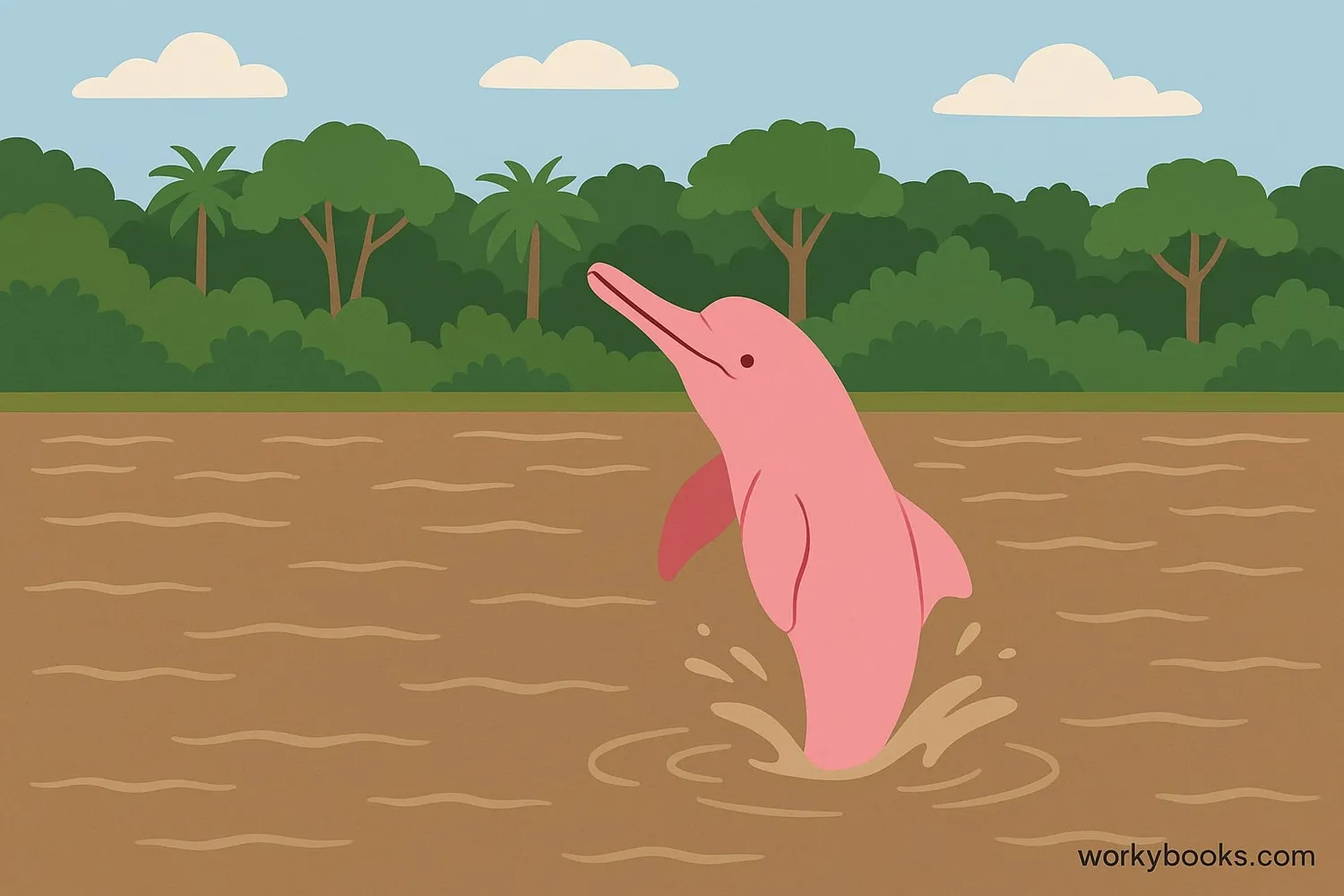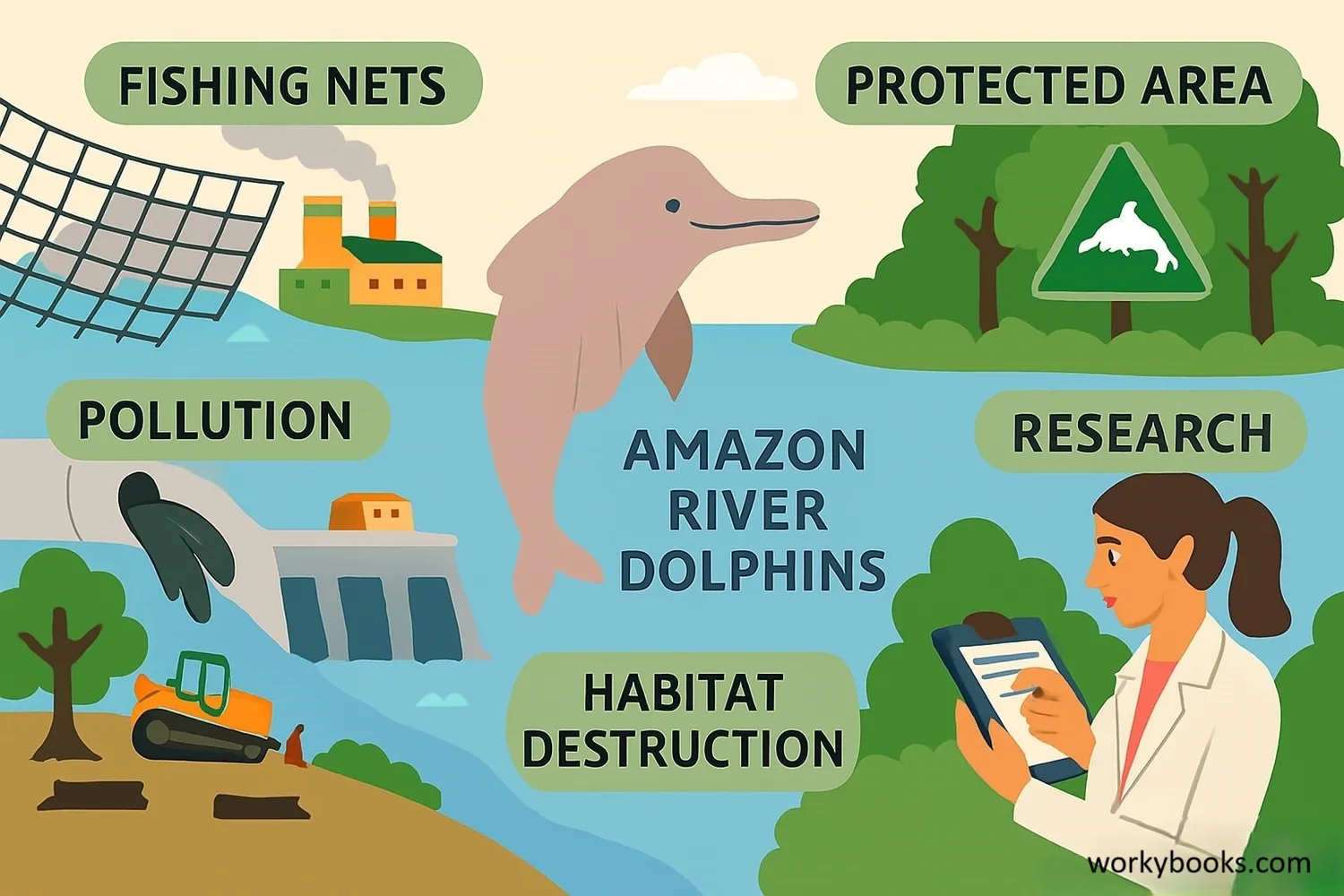Amazon River Dolphin - Definition, Examples, Quiz, FAQ, Trivia
Discover the amazing pink dolphins of the Amazon!
What is the Amazon River Dolphin?

The Amazon River Dolphin, also known as the Pink River Dolphin or Boto, is a special freshwater dolphin that lives in the Amazon River and its tributaries. Its scientific name is Inia geoffrensis.
Unlike ocean dolphins, these amazing creatures have adapted to live in freshwater rivers. They're famous for their beautiful pink color which can range from light gray to bright pink! The pink color comes from blood vessels near the skin's surface that help them regulate their body temperature in warm river waters.
These dolphins play an important role in the Amazon ecosystem and are considered sacred by some local cultures.
Did You Know?
Amazon River Dolphins are the largest freshwater dolphins in the world, growing up to 8 feet long!
Unique Characteristics

Amazon River Dolphins have several special features that help them survive in their river environment:
Pink Color
Ranges from light gray to bright pink depending on age and water temperature
Flexible Neck
Can turn head 180 degrees to navigate flooded forests
Long Snout
Perfect for catching fish among tree roots and vegetation
Small Eyes
Relies more on echolocation in murky waters
Large Flippers
Help navigate through flooded forests during rainy season
These dolphins have more bristles on their snouts than ocean dolphins, which help them feel for food in the muddy river bottom. They also have a hump on their back instead of a dorsal fin, which helps them swim through dense vegetation.
Habitat & Behavior

Amazon River Dolphins live throughout the Amazon and Orinoco river systems in South America. They're most commonly found in:
• Slow-moving rivers
• Flooded forests during rainy season
• River mouths
• Lakes connected to rivers
• Even near waterfalls during high water seasons
These dolphins are excellent swimmers and can navigate through flooded forests using their echolocation - a natural sonar system that helps them "see" with sound in murky waters. They make clicking sounds that bounce off objects, helping them locate fish and navigate obstacles.
Diet Facts
Amazon River Dolphins eat about 2.5% of their body weight daily - that's up to 12 kg (26 lbs) of fish for an adult!
Behavior: These dolphins are usually solitary or found in small groups. During mating season, males may become more pink and even fight with other males. They're curious animals and sometimes approach boats.
Diet: Their diet includes over 50 types of fish, plus crabs and turtles. They sometimes hunt in groups to herd fish.
Conservation

Amazon River Dolphins face several serious threats:
Fishing Nets
Accidentally caught in fishing gear
Pollution
Mercury from gold mining contaminates rivers
Dams
Block migration routes and flood habitats
Conservation organizations like the World Wildlife Fund (WWF) are working to protect these dolphins through:
• Creating protected river areas
• Researching dolphin populations
• Promoting sustainable fishing practices
• Reducing pollution from mining
• Educating local communities
The Amazon River Dolphin is currently classified as Endangered on the IUCN Red List, meaning they face a very high risk of extinction in the wild.
Amazon River Dolphin Quiz
Test your knowledge about the Amazon River Dolphin with this quiz! Answer all 5 questions to see how much you've learned.
Frequently Asked Questions
Here are answers to some common questions about Amazon River Dolphins:
Fun Amazon River Dolphin Trivia
Discover some amazing facts about these incredible creatures!
Super Flexible
Amazon River Dolphins have unfused neck vertebrae, allowing them to turn their heads 180 degrees! This helps them navigate through flooded forests and tight spaces.
Limited Vision
Their small eyes give them poor vision, but they make up for it with excellent echolocation abilities. They can detect objects as small as a BB pellet from 50 feet away!
Cultural Significance
In Amazonian folklore, the Boto is believed to transform into a handsome man at night who attends parties and enchants young women. Many locals consider them magical creatures.
Brain Power
Amazon River Dolphins have the largest brain-to-body ratio of any freshwater dolphin. Their brains are 40% larger than human brains relative to body size!


